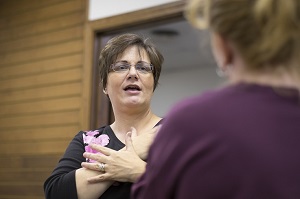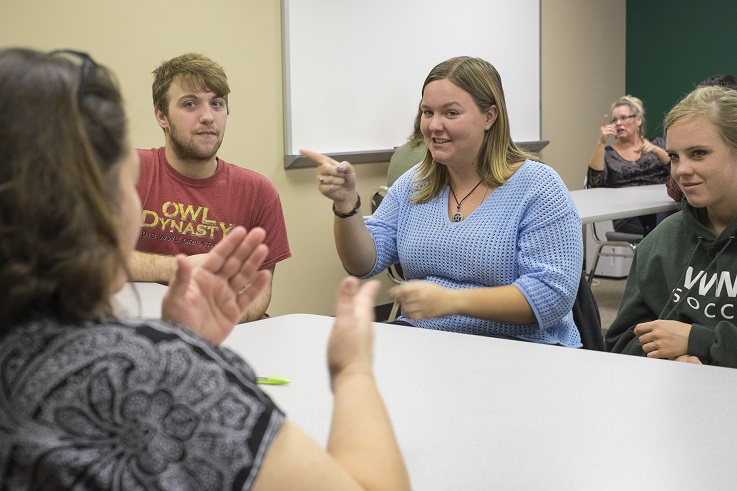Meet the ASL Interpreting online program at William Woods University
In 2012, the national certifying body for sign language interpreters, the Registry of Interpreters for the Deaf required that to sit for the certification from that date forward, applicants must hold a four-year degree.
While over 100 institutions offered two-year degrees in ASL interpreting at the time, only a few dozen offered bachelor’s degrees. This meant those interested in careers in sign language interpreting needed a way to earn that degree so they could become Nationally Certified Interpreters (CIs).
William Woods University started their online program in ASL interpreting to meet the needs of these students across the country.
 “It’s a degree completion targeted at those students, but we’ve also had a number of students with a variety of backgrounds take assessments to enter the program,” explains Dr. Barbara Garrett, professor of ASL Interpreting at William Woods.
“It’s a degree completion targeted at those students, but we’ve also had a number of students with a variety of backgrounds take assessments to enter the program,” explains Dr. Barbara Garrett, professor of ASL Interpreting at William Woods.
“We’re one of the very few places offering a degree completion program for students, so it’s a pretty unique thing, and it’s exciting to be able to offer that,” Dr. Garrett said.
Students must enter the program knowing sign language and having some interpreting experience or having taken some introductory-level interpreting classes.
The program features advanced coursework such as Interpreting in Advanced Settings, Ethics and Decision Making, a senior capstone and field practicum. It relies on an interactive video platform so that students may get the face-to-face interpreting practice they need, and receive feedback from their instructors. Students can do live interpreting, as well as recordings.
“The student can interpret, and I can go in and watch their interpretation and give them feedback. I can give that feedback in writing or I can record a video response back to them,” said Dr. Garrett.
Interpreting students in the transfer program hail from all over the country, but often meet each other at conferences, Deaf events, and interpreting events.
“We have students in so many places. It’s pretty cool to meet them, especially having taught them at a distance and then to meet them in person is pretty nice. We’ve had a few students come to campus to get to know the faculty as well.”
The program has students from Missouri, California, Louisiana and Washington.
Dr. Garrett also adds the opportunity William Woods University bachelor’s in interpreting students have to learn from several Deaf instructors, which is appealing to students in a field where they’re going to be interacting with Deaf native ASL users regularly.
It’s projected that by 2024, interpreters and translators will experience a 29 percent increase in employment. As more accessibility is offered, more people will be needed to provide these kinds of services. That’s where programs like William Woods’ online interpretation studies ASL-English degree program can help educate professionals to meet this demand.


